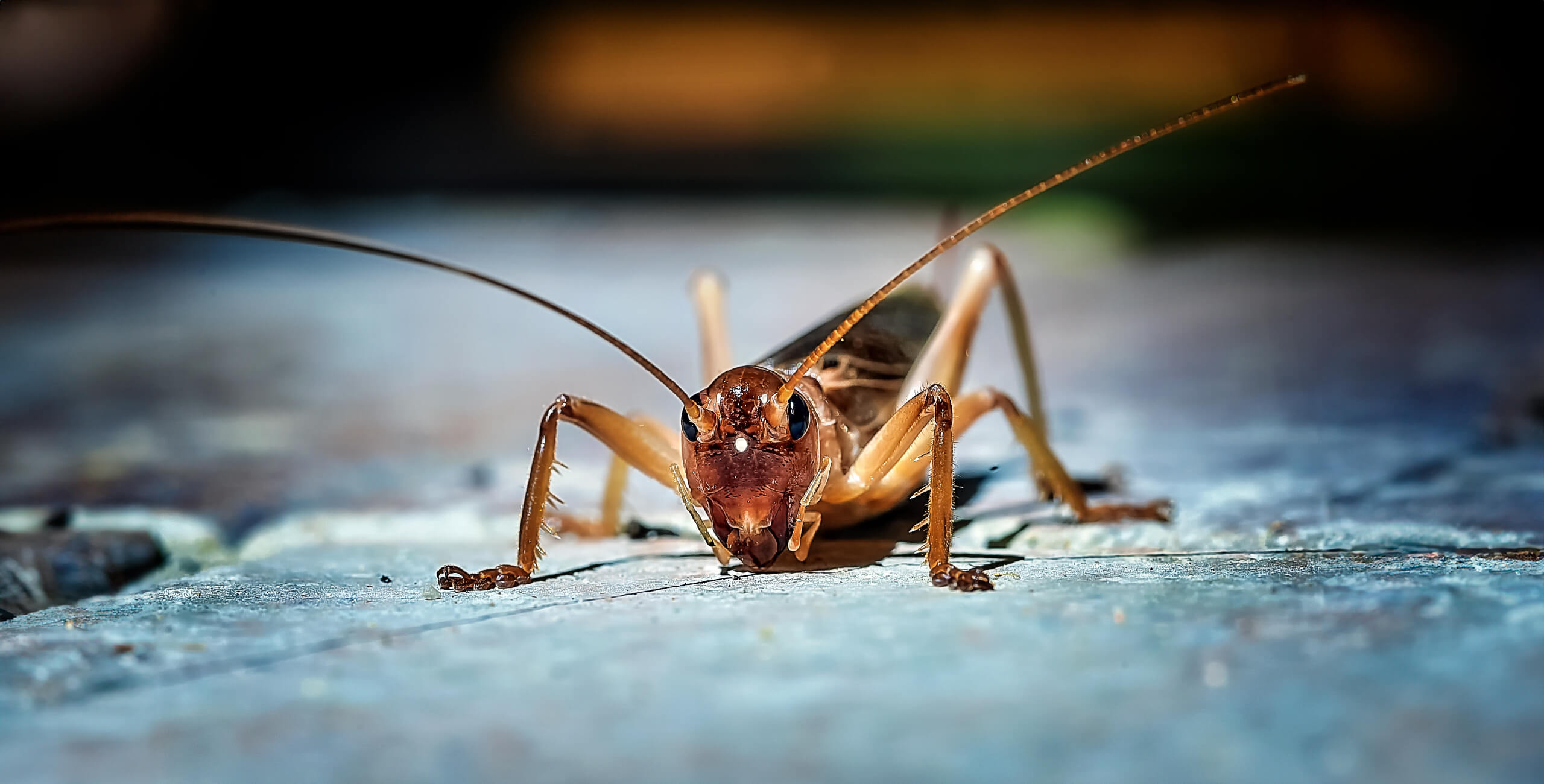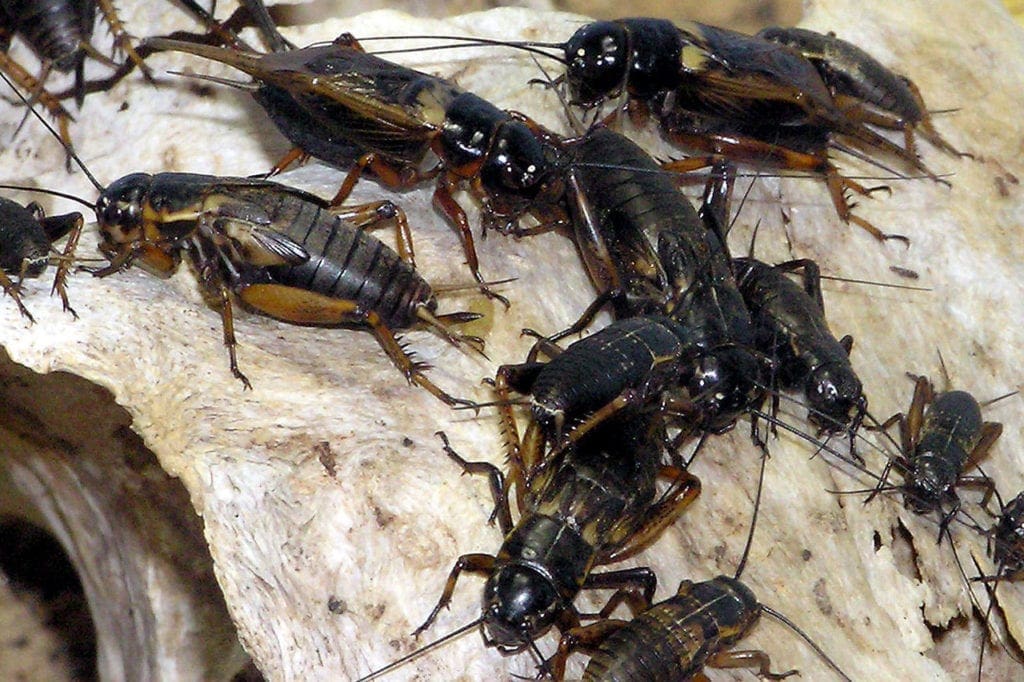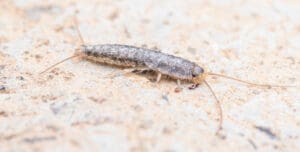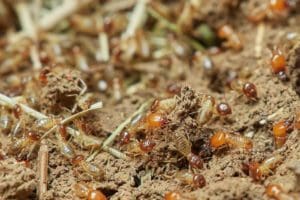

Crickets can quickly become a nuisance, both indoors and outdoors, disrupting your peace with their incessant chirping. If you’re wondering, “how do I get rid of crickets?”, understanding how to manage and eliminate these pests is crucial for maintaining a comfortable environment. In this article, we’ll explore effective strategies for getting rid of crickets and preventing future infestations.
What are Crickets?
Crickets are small, hopping insects known for their distinctive chirping sounds. They have cylindrical bodies, long antennae, and strong hind legs adapted for jumping. Most crickets are brown, black, or greenish in color, with prominent wings that allow some species to fly short distances. There are several types of crickets in New Jersey. Common species include the house cricket, which is light brown and often found indoors; the field cricket, typically black and living outdoors; and the camel cricket, which has a humped back and prefers dark, damp environments like basements.
Crickets are nocturnal, becoming more active at night. Male crickets produce chirping sounds by rubbing their wings together, primarily to attract females. Outdoors, crickets hide in grass, under logs, or in soil burrows, feeding on plants, fungi, and small insects. Indoors, they may be drawn to warmth and light. So the question remains, are crickets pests? The answer is simple- crickets are considered a nuisance pest because, though they are generally harmless and do not spread diseases, their chirping can become an annoyance when they invade homes, and they can damage fabrics or paper products if they are present in large numbers.
Why Are There Crickets In My House?
Crickets may invade homes and businesses in search of warmth, moisture, and food, especially during cooler months. As the temperature drops, they are attracted to indoor environments that provide warmth and shelter. Moisture is another key factor, as crickets thrive in damp areas like basements, bathrooms, and kitchens. Leaky pipes, condensation, or high humidity can draw them in. Entry points such as cracks in foundations, gaps around windows and doors, or openings around utility lines offer easy access for crickets to enter buildings.
Once inside, crickets seek out food sources, including fabrics, paper, and crumbs. They are omnivorous and will consume organic materials found in homes, like plants or decaying matter. In large numbers, they can cause damage by chewing on stored items or creating nuisance noise with their chirping. Their presence often signals favorable living conditions, such as moisture or structural vulnerabilities, which may need to be addressed to prevent further infestations.
How to Get Rid of Crickets in the House
Set sticky traps
Place sticky traps in areas where crickets are frequently seen, such as basements, attics, or around windows, to capture them passively.
Vacuum regularly
Vacuuming crickets and their eggs from carpets, floors, and hard-to-reach spaces can help control their population indoors. Empty the vacuum into a sealed bag immediately afterwards to prevent the crickets from escaping and reentering the property.
Reduce moisture
Fix leaky pipes, improve ventilation, and use dehumidifiers to reduce dampness in basements and bathrooms, making these areas less attractive to crickets.
Remove food sources
Keep food stored in airtight containers, clean up crumbs, and avoid leaving pet food out overnight to limit crickets' access to food.
Use indoor-safe pesticides
Apply insecticide sprays or baits labeled safe for indoor use, focusing on areas where crickets hide, such as under appliances or along baseboards.
Outdoor perimeter treatment
Apply insecticides around the building’s foundation to create a barrier that prevents crickets from entering.
Turn off outdoor lights at night
Crickets are drawn to light, so reducing outdoor lighting can help prevent them from being attracted to your property.

How to Get Rid of Crickets Outside
Maintain lawn health
Regularly mow the lawn to keep grass short, as crickets prefer tall grass and dense vegetation for hiding and breeding.
Remove yard debris
Clear away leaf litter, woodpiles, stones, and other clutter where crickets can hide. Reducing these shelters makes the yard less attractive to them.
Trim bushes and plants
Keep shrubs, plants, and trees well-trimmed to limit shaded, moist areas where crickets thrive.
Install outdoor lighting strategically
Use yellow or sodium vapor lights that are less attractive to crickets, or limit outdoor lighting at night to reduce their attraction.
Improve yard drainage
Ensure proper water drainage in the yard by fixing low spots or using landscaping techniques to prevent standing water, which creates moist conditions that crickets favor.
Apply outdoor insecticides
Treat the lawn and yard perimeter with outdoor-safe insecticides, focusing on cricket hiding spots, such as under decks, in flower beds, or near the foundation of the house.
Use diatomaceous earth
Spread diatomaceous earth in problem areas to act as a natural deterrent, killing crickets when they come into contact with it.
Remove mulch or replace with gravel
Consider replacing thick mulch with gravel or stones, which are less likely to harbor crickets.
Cricket Pest Control and Prevention Tips
Preventing cricket infestations starts with proactive cricket pest control measures, such as sealing potential entry points like cracks in foundations, gaps around windows and doors, and openings near utility lines.
Using caulk, weather stripping, and door sweeps can effectively block crickets from entering homes or businesses. Reducing moisture is equally important, as crickets are drawn to damp environments. Indoors, this can be achieved by fixing leaky pipes, improving ventilation, and using dehumidifiers in basements or bathrooms. Outdoors, proper yard drainage, along with reducing water sources like standing water or soggy soil, helps keep the surrounding area less hospitable to crickets. Additionally, managing outdoor lighting can play a role in prevention. Since crickets are attracted to light, using yellow or sodium vapor lights, or simply turning off unnecessary lights at night, can reduce the chances of them gathering near entrances.
If these preventative measures fail or the cricket infestation becomes unmanageable, and you’re left wondering “how do I get rid of crickets?”, it’s wise to contact a pest professional for effective yard pest control. If these preventative measures fail or the cricket infestation becomes unmanageable, it is wise to contact a pest professional for yard pest control. A professional can assess the extent of the problem and apply targeted treatments, ensuring the infestation is effectively eliminated while reducing the chances of recurrence.
Effective cricket management requires a combination of preventive measures and targeted treatments. For tailored solutions in both residential pest control and commercial pest control, it’s essential to act promptly. Don’t let crickets take over your space- contact us today for expert assistance and keep your environment cricket-free!






